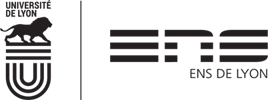Guidelines
Friendships between writers encourage some of them to submit their manuscripts and works in progress to each other, in the hope that they receive critical judgment that will validate their approach or make it evolve. Correspondences between writers thus contain hidden treasures of literary analysis when the recipient of a work or text in progress comments upon it, criticizes or judges it, inciting the sender to justify or defend his or her choices, or to reconsider his or her method. It is thus often through their correspondence that writers have managed to develop their own poetics and aesthetics. Epistolary discussions also take place after publication and some correspondences include violent exchanges between writers who do not share the same artistic conceptions and therefore criticise works recently published by the recipients of their letters.
The aim of this conference is precisely to analyse the specificity of correspondences in which writers comment upon their own work or artistic approach as well as those of their addressees. We will particularly concentrate on the points of contact between correspondences and literary criticism, on the way writers reveal themselves as their peers’ first critics. This process can sometimes help their addressees define more clearly their trains of thoughts and accompany works in their gestation. The epistolary genre thus becomes an aesthetic laboratory and a place for literary debates, as shown by the essays collected by Pierre-Jean Dufief in 2003 in the volume Lettre et Critique (Publications du Centre d'Etude des Correspondances et Journaux Intimes des XIXème et XXème siècles). One may think in particular of Gustave Flaubert’s very rich correspondence with Ivan Turgenev, George Sand, Louis Bouilhet, Louise Colet, Maxime Du Camp or Alfred Le Poittevin, but also, to give one example among many, the letters between Eudora Welty and William Maxwell, What There Is to Say We Have Said (2011). It may even be more common for poets to submit their pieces to the sharp criticism of their peers (for English-speaking writers, one may think of Elizabeth Bishop and Robert Lowell, W. B. Yeats and Dorothy Wellesley, William Carlos Willimas and Louis Zukofsky, Ezra Pound and E. E. Cummings; one may also refer to French poets such as Gérard de Nerval and Théophile Gautier as well as many others evoked in Correspondance et poésie, a collection of essays edited by Jean-Marc Hovasse in 2011).
The participants in the symposium will therefore make a strict selection in writers’ correspondences in order to focus on specific epistolary passages that deal with the artistic creation of each author as it is being made or immediately after publication. In these cases, a fruitful dialogue is taking place between the writer and his or her reader-writer, which urges each of them to delineate more clearly their respective aesthetic stances, so that epistolary debates on specific texts sometimes result in the formulation of a full-fledged ars poetica (let us remember that Horace’s Ars poetica or Epistle to the Pisos was originally a letter in verse addressed to the Piso family). The contributors will be welcome to offer a genetic analysis of a given text by comparing the first draft to its revised version, and analysing which comments by a peer in correspondence have been taking into account and which have been discarded. Cases of reciprocal fertilisation will also be considered, when the perusal and criticism of a manuscript by a fellow writer effects the reader-writer’s own production and approach to his or her work.
We will also examine the generic status of those literary correspondences whose very specific object is creation itself. Far from the autobiographical or anecdotal dimension to which the epistolary genre often pertains, the aim here will be to focus on the critical component of these private exchanges. What is at stake indeed is a very peculiar type of literary criticism: not that of a mere external exegete, but that of an acquaintance of the author who is himself a writer. In addition, the critical judgment offered by that writer was not originally meant to be published and is therefore not formulated with that intention; it is thus probably more spontaneous, direct and open, without any taboo or censure (even if feelings of friendship – or even of love – between letter writers can lead some addressees to qualify their criticism). This raises the question of which status can be granted to this very early stage of private literary criticism that could then be compared to the public reviews later published by the same writers on the same works. Such exchanges greatly differ from self-conscious and market-oriented correspondences that were initiated from the start with the deliberate intention of publication, as is the case of the recent volume of letters between Paul Auster and J.M. Coetzee, Here and Now: Letters 2008-2011 (2013), or the email correspondence between Frederic Raphael and Joseph Epstein, who did not know each other previously, Distant Intimacy: A Friendship in the Age of the Internet (2013).
The correspondences between writers that will be analysed will be either published volumes or unpublished letters that have been consulted in archives. Ideally, both sides of the correspondence will be available so that the analysis can focus on the dialogue between the two writers. Contributors will concentrate primarily on epistolary exchanges about the work of the corresponding writers rather than about works by other writers or literature in general.
The conference is aimed at scholars of French and Anglophone literature from the XVIth to the XXIst century. Contributions will be in English or in French. All papers will be peer-reviewed before publication.
ENS de Lyon
15 parvis René Descartes - BP 7000
69342 Lyon Cedex 07 - FRANCE
Tél. : Site René Descartes (siège) : +33 (0) 4 37 37 60 00
Site Jacques Monod : +33 (0) 4 72 72 80 00



